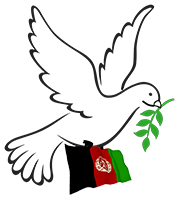| By Ishaan Tharoor with Sammy Westfall The Washington Post January 30, 2023 For much of the past year, the West’s policymakers and analysts were possessed by one haunting question: How bad will Europe’s winter be? Energy prices on the continent surged because of the war in Ukraine and sanctions on Russia’s energy industry. The prospect of a deep cold spell as European governments rationed gas supplies conjured images of a bleak winter from Lviv to London, with industry going dark and pensioners scavenging for firewood. But consider another part of the world that has receded from the West’s attention over the course of the Ukraine conflict. Afghanistan is currently in the grips of its worst winter in more than a decade. Temperatures recently plunged to below minus-34 degrees Celsius (minus-29.2 degrees Fahrenheit). Officials in the local Taliban government said the cold has been lethal, leading to more than 160 deaths over the span of about two weeks, and killing more than 70,000 livestock. My colleague Sammy Westfall noted the details at the end of last week: “Of the 162 people who have died because of the cold weather since Jan. 10, more than half died in the past week, said Shafiullah Rahimi, a spokesman for the Ministry of Disaster Management, Reuters reported Thursday. Afghans have been dying of hypothermia, as well as carbon monoxide poisoning and gas leakage, amid a widespread lack of heating systems, local outlet Tolo News reported.” The death toll is expected to rise as communities in rural areas dig themselves out of the snow. The dismal conditions have struck a society ill-equipped to cope. Afghanistan is already buckling under the stress of a rolling humanitarian crisis, triggered by years of drought and the economic implosion that followed the Taliban’s takeover in 2021. The country’s foreign reserves are frozen by U.S. sanctions; its banking system has collapsed, partially due to the disappearance of foreign aid; and the price of ordinary goods — including firewood and coal — have skyrocketed. Two-thirds of the country’s 40 million people will likely require humanitarian assistance of some form in 2023, including some 15 million children. Roughly half the country may face acute food insecurity. Afghanistan imports the bulk of its electricity from its neighbors and the country is accustomed to shortages and power cuts. But the blackouts this winter have proved all the more miserable, forcing families in some instances to choose between feeding themselves or trying to keep warm. Many are struggling to do either. “If we buy coal and wood, then we won’t be able to buy food,” a woman named Maryam in Samangan province, north of the Hindu Kush mountain range, told Al Jazeera. “This is the coldest winter of my life, and I don’t know how we will survive it without food or heat.” Sharafuddin, a resident of the city of Herat, told Radio Azadi last week: “During the cold nights, we are awake with our children and cannot sleep. It is already midday, and I have neither had breakfast nor drank tea. … I’m sitting here praying to God.” The country’s hospitals are “on life support,” according to the International Committee of the Red Cross. A health worker in Kabul described to the New Humanitarian what happened when her clinic had to turn off its generator after continuous use: “We had to shut it for two hours, and we told the mothers to find a way to warm their newborns. If we kept them in the incubators without electricity they would freeze. If we took them out, they could have problems breathing.” The difficulty of the situation is exacerbated by the defiance and extremism of the Taliban authorities. Since seizing power 18 months ago, the fundamentalist Islamist movement has set about reversing the legacy of two decades of U.S.-backed government, banning girls from secondary schools, then universities and most recently barring women from working in domestic or foreign-backed nongovernment organizations, many of which are instrumental in delivering what meager aid is available to the Afghan public. The Taliban, whose pariah government in Kabul is not recognized by the international community, has shown little inclination to bend to either local or outside anger over these discriminatory moves. Individual governments, even those that have a long history of dealings with the Taliban, like Qatar and Pakistan, claim to have little leverage over the factions of the Taliban dictating policy on the ground in Afghanistan. The United States has limited diplomatic tools beyond more targeted sanctions to place more pressure on the Taliban. U.N. officials have pressed the Taliban to allow exemptions for female workers in the health nongovernmental organizations, a concession that shows it’s possible to chip away at the Islamists’ entrenched position. “We have not seen the history of the Taliban reversing any edict,” U.N. Deputy Secretary General Amina Mohammed told reporters after visiting the country earlier this month. “What we have seen is exemptions that, hopefully, if we keep pushing them, they will water down those edicts to a point where we will get women and girls back into school and into the workplace.” She added that “a lot of what we have to deal with is how we travel the Taliban from the 13th century to the 21st. And that’s, that’s a journey.” Martin Griffiths, the U.N.’s humanitarian chief who also recently traveled to Afghanistan, said it was important for his organization and other agencies to be able to work with women and necessary for the Taliban to make “practical exceptions” given the circumstances. “We don’t have time,” Griffiths said. “The winter is with us, people are dying, famine is looming.” |
Winter has come for Afghanistan
February 2, 2023
Analytical articles
 Afghanistan Peace Campaign
Afghanistan Peace Campaign